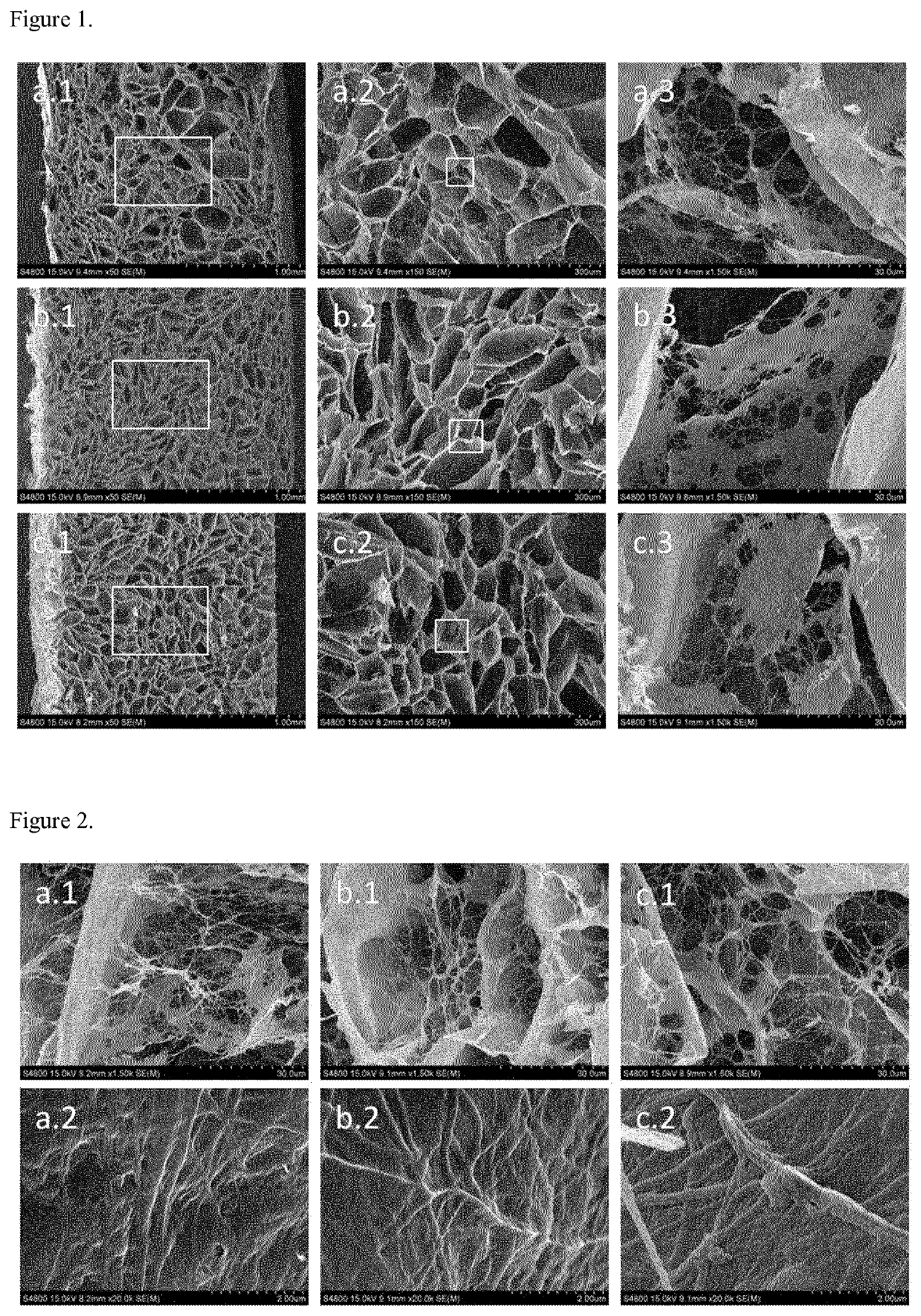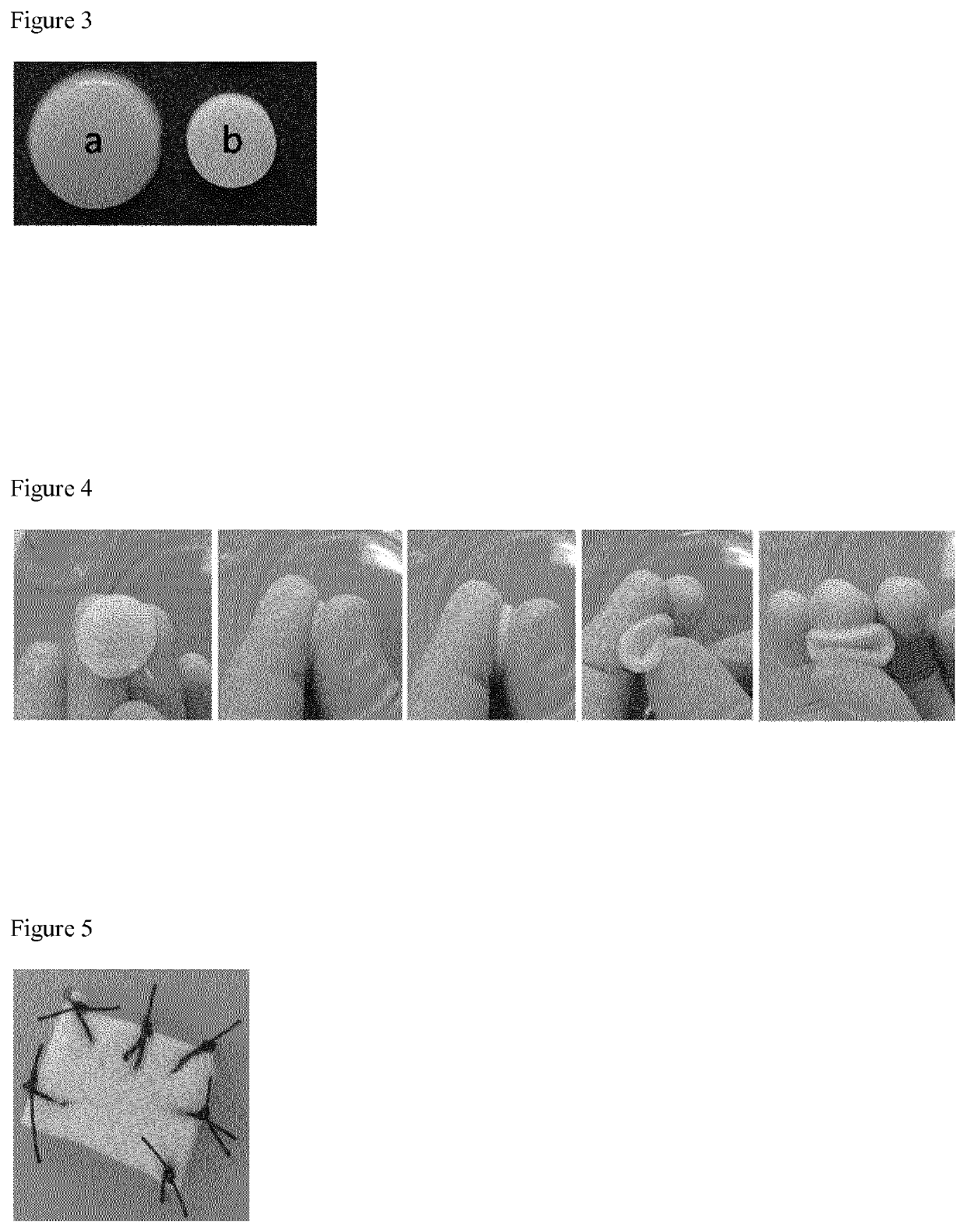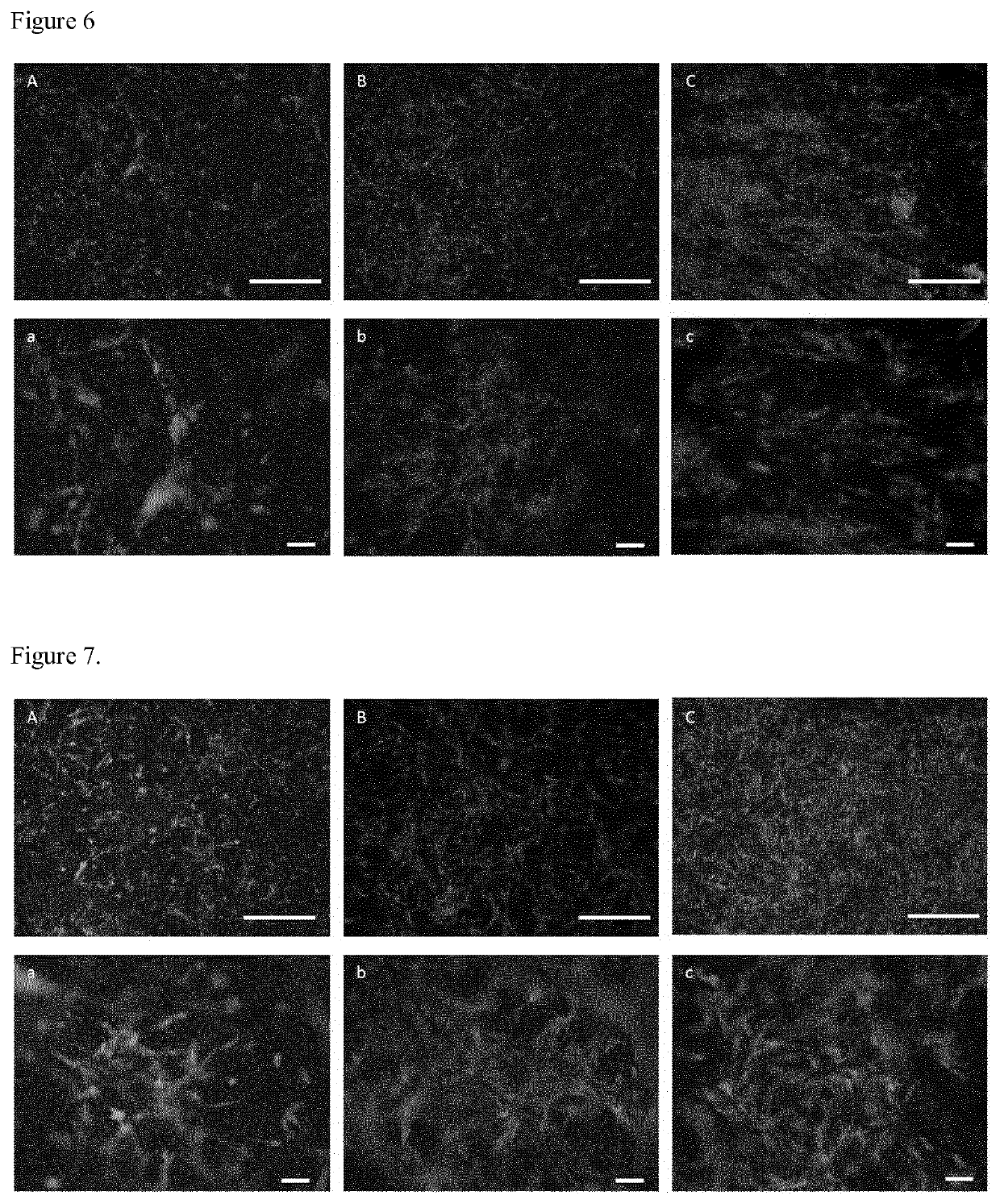Biomaterial scaffold for regenerating the oral mucosa
a biomaterial and oral mucosa technology, applied in the field of tissue engineering, can solve the problems of oral mucosa loss, material biocompatibility, and difficult and necessary oral mucosa repair, and achieve the effect of high strength and convenient handling
- Summary
- Abstract
- Description
- Claims
- Application Information
AI Technical Summary
Benefits of technology
Problems solved by technology
Method used
Image
Examples
example 1
on of the Biomaterial Scaffold
[0153]A solution containing a mixture of human blood plasma (76 ml), PBS 1× (16.5 ml) and Amchafibrin (1.5 ml) was prepared. Agarose 4% (5 ml) and calcium chloride 10% (1 ml) were added to said solution at the same time. The proportions are measured in v / v with respect to the total volume of the resulting mixture.
[0154]The resulting mixture was mixed thoroughly and added to a mold. The mixture was left to gel. FIG. 3(a) shows the resulting hydrogel prior to be subjected to lyophilization.
[0155]The hydrogel formed was washed gently with water and lyophilized. In that purpose hydrogels were frozen at −80° C. and water was sublimated afterwards at 0.024 mbar an −48° C.
example 2
on of the Biomaterial Scaffold and Physical Characterization Thereof
[0156]A solution containing a mixture of human blood plasma (76 ml), PBS 1× (16.5 ml) and Amchafibrin (1.5 ml) was prepared. Agarose 4% (5 ml) and calcium chloride 10% (1 ml) were added to said solution at the same time. The proportions are measured in v / v with respect to the total volume of the resulting mixture.
[0157]The resulting mixture was mixed thoroughly and added to a mold. The mixture was left to gel.
[0158]The hydrogel formed was then subjected to a freezing-thawing process by freezing the hydrogel at −20° C. during 12 hours and subsequently the frozen hydrogel was thawed at room temperature during 3 hours.
[0159]FIG. 3 (b) shows the resulting hydrogel prior to be subjected to lyophilization.
[0160]After that, the resulting hydrogel was washed gently with water and lyophilized. In that purpose hydrogels were frozen at −80° C. and water was sublimated afterwards at 0.024 mbar an −48° C.
[0161]The same procedure...
example 3
roof-of-Principle
[0183]In a first approach, a biomaterial synthesized according to example 2 was subcutaneously implanted in a rat model in order to evaluate the response of the surrounding tissue to the biomaterial implanted in terms of potential toxicity events and degradability. Wistar AG rats more than 8 weeks of age were used in this study following housing and management according to Ethical Committee rules.
[0184]In each animal, two incisions at both sides of the lower back were performed and 1 cm2 of biomaterial was introduced subcutaneously through one of the incisions (see FIG. 10), leaving the other as control (physiological saline solution). At 7, 14, 30 and 60 days after biomaterial implanted, rats were sacrificed and biomaterial and surrounding tissues obtained for histological evaluation.
[0185]No signs of macroscopic external inflammation, erythema or edema were observed at any time of the experience in the adjacent tissues. Signs of neovascularization were observed bo...
PUM
| Property | Measurement | Unit |
|---|---|---|
| time | aaaaa | aaaaa |
| concentration | aaaaa | aaaaa |
| concentrations | aaaaa | aaaaa |
Abstract
Description
Claims
Application Information
 Login to View More
Login to View More - R&D
- Intellectual Property
- Life Sciences
- Materials
- Tech Scout
- Unparalleled Data Quality
- Higher Quality Content
- 60% Fewer Hallucinations
Browse by: Latest US Patents, China's latest patents, Technical Efficacy Thesaurus, Application Domain, Technology Topic, Popular Technical Reports.
© 2025 PatSnap. All rights reserved.Legal|Privacy policy|Modern Slavery Act Transparency Statement|Sitemap|About US| Contact US: help@patsnap.com



